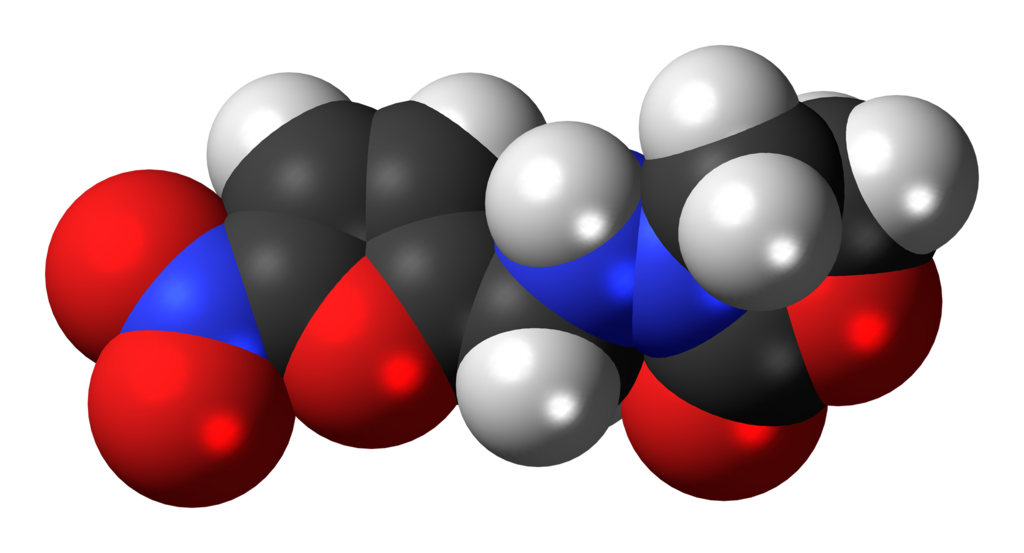Furazolidone
 | |
 | |
| Clinical data | |
|---|---|
| AHFS/Drugs.com | Micromedex Detailed Consumer Information |
| Routes of administration | Oral-Local |
| ATC code | |
| Identifiers | |
| |
| CAS Number | |
| PubChem CID | |
| DrugBank | |
| ChemSpider | |
| UNII | |
| KEGG | |
| ChEMBL | |
| E number | {{#property:P628}} |
| ECHA InfoCard | {{#property:P2566}}Lua error in Module:EditAtWikidata at line 36: attempt to index field 'wikibase' (a nil value). |
| Chemical and physical data | |
| Formula | C8H7N3O5 |
| Molar mass | 225.16 |
| 3D model (JSmol) | |
| |
| |
| | |
|
WikiDoc Resources for Furazolidone |
|
Articles |
|---|
|
Most recent articles on Furazolidone Most cited articles on Furazolidone |
|
Media |
|
Powerpoint slides on Furazolidone |
|
Evidence Based Medicine |
|
Clinical Trials |
|
Ongoing Trials on Furazolidone at Clinical Trials.gov Clinical Trials on Furazolidone at Google
|
|
Guidelines / Policies / Govt |
|
US National Guidelines Clearinghouse on Furazolidone
|
|
Books |
|
News |
|
Commentary |
|
Definitions |
|
Patient Resources / Community |
|
Patient resources on Furazolidone Discussion groups on Furazolidone Patient Handouts on Furazolidone Directions to Hospitals Treating Furazolidone Risk calculators and risk factors for Furazolidone
|
|
Healthcare Provider Resources |
|
Causes & Risk Factors for Furazolidone |
|
Continuing Medical Education (CME) |
|
International |
|
|
|
Business |
|
Experimental / Informatics |
Editor-In-Chief: C. Michael Gibson, M.S., M.D. [1]
Overview
Furazolidone is a nitrofuran antibacterial. It is marketed by Roberts Laboratories under the brand name Furoxone and by GlaxoSmithKline as Dependal-M. Diafuron, medaron
Uses
Furazolidone has been used in human and veterinary medicine. It has a broad spectrum of activity being active against
- Gram positive
- Gram negative
- Protozoa
Use in humans
In humans it has used to treat diarrhoea and enteritis caused by bacteria or protozoan infections. It has been used to treat traveler's diarrhoea, cholera and bacteremic salmonellosis. Use in treating Helicobacter pylori infections has also been proposed.[1]
Furazolidone is also used for giardiasis (due to Giardia lamblia), though it is not a first line treatment.[2]
As for all medicines the most recent local recommendations for its use should be always be followed. The usual dose is:
- Adult: 100 mg 4 times daily. Usual duration: 2-5 days, up to 7 days in some patients or 10 days for giardiasis.
- Child: 1.25 mg/kg 4 times daily, usually given for 2-5 days or up to 10 days for giardiasis.
Use in animals
As a veterinary medicine, furazolidone has been used with some success to treat salmonids for Myxobolus cerebralis infections.
It has also been used in aquaculture.[3]
Since furazolidone is a nitrofuran antibiotic, its use in food animals is currently prohibited by the FDA under the Animal Medicinal Drug Use Clarification Act, 1994.[4]
Use in laboratory
It is used to differentiate micrococci and staphylococci.
Mechanism
It is believed to work by crosslinking of DNA.[5]
Side effects
Furazolidone is no longer available in the US. Though an effective antibiotic when all others fail, against extremely drug resistant infections, it has many side effects, and as with other nitrofurans generally, minimum inhibitory concentrations also produce systemic toxicity (tremors, convulsions, peripheral neuritis, gastrointestinal disturbances, depression of spermatogenesis.) Nitrofurans are recognized by FDA as mutagens/carcinogens, and can no longer be used since 1991.[6]
See also
References
- ↑ Machado RS, Silva MR, Viriato A (2008). "Furazolidone, tetracycline and omeprazole: a low-cost alternative for Helicobacter pylori eradication in children". Jornal de pediatria. 84 (2): 160–5. doi:10.2223/JPED.1772. PMID 18372934.
- ↑ Petri WA (February 2005). "Treatment of Giardiasis" ([dead link]). Curr Treat Options Gastroenterol. 8 (1): 13–17. doi:10.1007/s11938-005-0047-3. PMID 15625030.
- ↑ Meng J, Mangat SS, Grudzinski IP, Law FC (1998). "Evidence of 14C-furazolidone metabolite binding to the hepatic DNA of trout". Drug Metabol Drug Interact. 14 (4): 209–19. PMID 10694929.
- ↑ Bagley, Clell. "Drugs Prohibited from Extralabel Use in Animals". Retrieved 14 April 2014.
- ↑ "DrugBank: Showing Furazolidone (DB00614)". Retrieved 2008-12-19.
- ↑ http://caraga.da.gov.ph/services/banmed-Nitrofurans.htm[dead link]
Template:Excavata antiparasitics Template:Nucleic acid inhibitors
- Pages with script errors
- CS1 maint: Multiple names: authors list
- All articles with dead external links
- Articles with dead external links from May 2010
- Articles with invalid date parameter in template
- Articles with dead external links from December 2013
- Template:drugs.com link with non-standard subpage
- Articles with changed KEGG identifier
- Articles with changed EBI identifier
- E number from Wikidata
- ECHA InfoCard ID from Wikidata
- Chemical articles with unknown parameter in Infobox drug
- Drugs with no legal status
- Drugboxes which contain changes to verified fields
- Drugboxes which contain changes to watched fields
- Drug
- Antibiotics
- Antiprotozoal agents
- Monoamine oxidase inhibitors